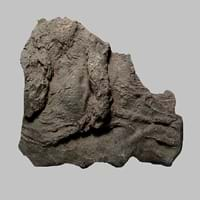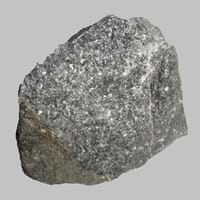Definition
During the impact melted material forming a breccia containing glass and crystal or lithic fragments together form Suevite rock.
Andesite is a dark, fine-grained, brown or greyish intermediate volcanic rock which is a commonly found in lava
Origin
Canada, Germany
North America
Discoverer
Unknown
Unknown
Etymology
No etymologies found
From Andes mountains, where it is found in abundance
Class
Metamorphic Rocks
Igneous Rocks
Sub-Class
Durable Rock, Medium Hardness Rock
Durable Rock, Hard Rock
Group
Not Applicable
Volcanic
Other Categories
Coarse Grained Rock, Opaque Rock
Fine Grained Rock, Opaque Rock
Texture
Earthy
Aphanitic to Porphyritic
Color
Black, Brown, Colourless, Green, Grey, Pink
Bluish - Grey, Grey, Pink, Yellow
Durability
Durable
Durable
Scratch Resistant
Yes
Yes
Appearance
Banded
Dull and Soft
Interior Uses
Decorative Aggregates, Homes, Interior Decoration
Decorative Aggregates, Floor Tiles, Homes, Interior Decoration, Kitchens
Exterior Uses
As Building Stone, As Facing Stone, Garden Decoration, Office Buildings
Office Buildings, Roof Tiles
Other Architectural Uses
Curbing
Curbing
Construction Industry
As Dimension Stone, Cement Manufacture, for Road Aggregate, Making natural cement, Manufacture of Magnesium and Dolomite Refractories
Cobblestones, Construction Aggregate, for Road Aggregate
Medical Industry
Not Applicable
Not Yet Used
Antiquity Uses
Artifacts, Monuments, Sculpture
Artifacts, Monuments, Sculpture, Small Figurines
Commercial Uses
As a Feed Additive for Livestock, Gemstone, Metallurgical Flux, Source of Magnesia (MgO)
Commemorative Tablets, Creating Artwork
Types
Phyllosilicates, Calcite
Icelandite
Features
Host Rock for Lead
Generally rough to touch, High silica content, Is one of the oldest rock
Archaeological Significance
Famous Monuments
Data Not Available
Middle of the Earth in Ecuador
Famous Sculptures
Data Not Available
Data Not Available
Pictographs
Used
Not Used
Petroglyphs
Used
Not Used
Formation
Suevite is a metamorphic rock consisting partly of melted material, typically forming a breccia containing glass and crystal or lithic fragments, formed during an impact event.
Andesite is a fine-grained igneous rock that forms when the magma is erupted onto the surface and is crystallized quickly.
Mineral Content
Coesite, Quartz, Stishovite
Amphibole, Apatite, Biotite, Feldspar, Garnet, Hornblade, Ilmenite, Magnetite, Plagioclase, Pyroxene, Zircon
Compound Content
CaO, Carbon Dioxide, MgO
Silicon Dioxide
Types of Metamorphism
Burial Metamorphism, Cataclastic Metamorphism, Contact Metamorphism, Hydrothermal Metamorphism, Impact Metamorphism, Regional Metamorphism
Burial Metamorphism, Cataclastic Metamorphism, Contact Metamorphism, Hydrothermal Metamorphism, Impact Metamorphism, Regional Metamorphism
Types of Weathering
Not Applicable
Biological Weathering, Chemical Weathering, Mechanical Weathering
Types of Erosion
Not Applicable
Chemical Erosion, Coastal Erosion, Glacier Erosion
Grain Size
Coarse Grained
Very fine-grained
Streak
Light to dark brown
White
Porosity
Less Porous
Less Porous
Compressive Strength
Not Available
Cleavage
Irregular
Not Available
Toughness
Not Available
1.1
Specific Gravity
2.86
2.5-2.8
Transparency
Opaque
Opaque
Density
2.8-2.9 g/cm3
2.11-2.36 g/cm3
Resistance
Heat Resistant
Heat Resistant, Pressure Resistant, Wear Resistant
Deposits in Eastern Continents
Asia
Not Yet Found
India, Indonesia, Japan, Nepal, South Korea
Africa
Not Yet Found
Egypt, Ethiopia, Morocco, Namibia, South Africa, Tanzania
Europe
England, France, Germany, Great Britain, Netherlands, Sweden, Switzerland, United Kingdom
Austria, Finland, Germany, Italy, Romania, Turkey, United Kingdom
Others
Not Yet Found
Not Yet Found
Deposits in Western Continents
North America
Not Yet Found
Mexico, USA
South America
Not Yet Found
Argentina, Bolivia, Chile, Colombia, Ecuador, Peru, Venezuela
Deposits in Oceania Continent
Australia
Not Yet Found
New South Wales, New Zealand, Western Australia
All about Suevite and Andesite Properties
Know all about Suevite and Andesite properties here. All properties of rocks are important as they define the type of rock and its application. Suevite belongs to Metamorphic Rocks while Andesite belongs to Igneous Rocks.Texture of Suevite is Earthy whereas that of Andesite is Aphanitic to Porphyritic. Suevite appears Banded and Andesite appears Dull and Soft. The luster of Suevite is earthy while that of Andesite is vitreous. Suevite is available in black, brown, colourless, green, grey, pink colors whereas Andesite is available in bluish - grey, grey, pink, yellow colors. The commercial uses of Suevite are as a feed additive for livestock, gemstone, metallurgical flux, source of magnesia (mgo) and that of Andesite are commemorative tablets, creating artwork.










